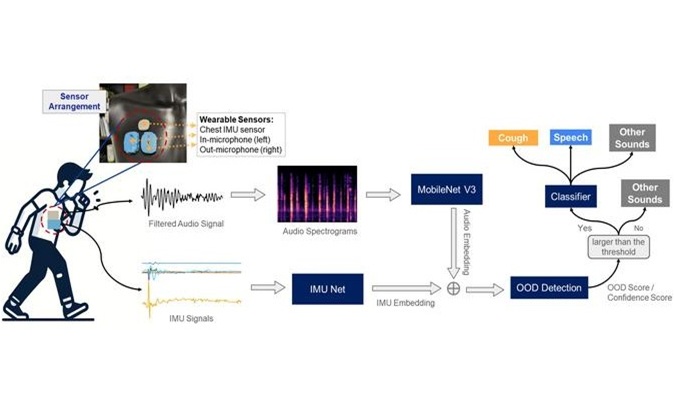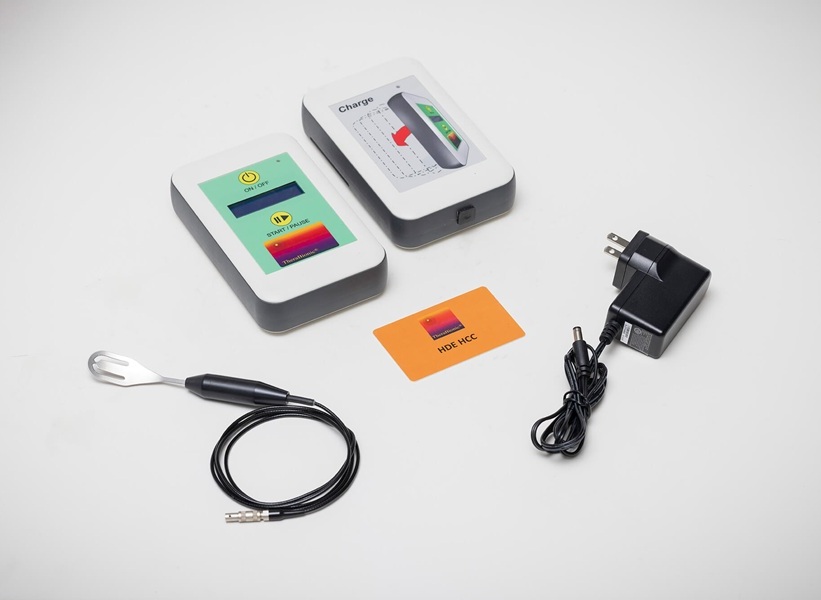CT Radiomics Helps Classify Small Lung Nodules
|
By HospiMedica International staff writers Posted on 01 Feb 2021 |

Image: CT radiomics can help classify lung nodule malignancy (Photo courtesy of Getty Images)
A machine-learning (ML) algorithm can be highly accurate for classifying very small lung nodules found in low-dose CT lung screening programs, according to a new study.
Researchers at the BC Cancer Research Center (BCCRC; Vancouver, Canada) trained a linear discriminant analysis (LDA) ML algorithm--using data from the Pan-Canadian Early Detection of Lung Cancer (PanCan) study--to characterize, analyze, and classify small lung nodules as malignant or benign by extracting approximately 170 texture and shape radiomic features, following semi-automated nodule segmentation on the images. They then compared the performance of the algorithm with that of the Prostate, Lung, Colorectal, and Ovarian (PLCO) m2012 malignancy risk score calculator on another dataset.
The study cohort consisted of 139 malignant nodules and 472 benign nodules that were approximately matched in size. The researchers applied size restrictions (based on Lung-RADS classification criteria) to remove any nodules from the dataset that would already be considered suspicious, which would include any nodule with solid components greater than 8 mm in diameter. The results showed the ML algorithm significantly outperformed the (PLCO) m2012 risk-prediction model, especially when demographic data were added to radiomics analysis. The study was presented at the AACR Virtual Special Conference on Artificial Intelligence, Diagnosis, and Imaging, held during January 2021.
“The best results were achieved in a subset of patients who were younger than 64, female, did not have emphysema, smoked fewer than 42 pack years, did not have a family history of lung cancer, and were not current smokers,” said senior author and study presenter Rohan Abraham, PhD. “Combined with clinician expertise and experience, this has the potential to enable earlier intervention and reduce the need for follow-up CT.”
Current lung nodule classification relies on nodule size, a factor that is of limited use for sub-centimeter nodules, or on volume doubling time, a variable that requires follow-up CT exams. As a result, very small lung nodules, with solid components of less than 8 mm in diameter (and therefore below the Lung-RADS 4A risk-stratification threshold), are very difficult to classify, and they are often given a "wait and see" management plan.
Related Links:
BC Cancer Research Center
Researchers at the BC Cancer Research Center (BCCRC; Vancouver, Canada) trained a linear discriminant analysis (LDA) ML algorithm--using data from the Pan-Canadian Early Detection of Lung Cancer (PanCan) study--to characterize, analyze, and classify small lung nodules as malignant or benign by extracting approximately 170 texture and shape radiomic features, following semi-automated nodule segmentation on the images. They then compared the performance of the algorithm with that of the Prostate, Lung, Colorectal, and Ovarian (PLCO) m2012 malignancy risk score calculator on another dataset.
The study cohort consisted of 139 malignant nodules and 472 benign nodules that were approximately matched in size. The researchers applied size restrictions (based on Lung-RADS classification criteria) to remove any nodules from the dataset that would already be considered suspicious, which would include any nodule with solid components greater than 8 mm in diameter. The results showed the ML algorithm significantly outperformed the (PLCO) m2012 risk-prediction model, especially when demographic data were added to radiomics analysis. The study was presented at the AACR Virtual Special Conference on Artificial Intelligence, Diagnosis, and Imaging, held during January 2021.
“The best results were achieved in a subset of patients who were younger than 64, female, did not have emphysema, smoked fewer than 42 pack years, did not have a family history of lung cancer, and were not current smokers,” said senior author and study presenter Rohan Abraham, PhD. “Combined with clinician expertise and experience, this has the potential to enable earlier intervention and reduce the need for follow-up CT.”
Current lung nodule classification relies on nodule size, a factor that is of limited use for sub-centimeter nodules, or on volume doubling time, a variable that requires follow-up CT exams. As a result, very small lung nodules, with solid components of less than 8 mm in diameter (and therefore below the Lung-RADS 4A risk-stratification threshold), are very difficult to classify, and they are often given a "wait and see" management plan.
Related Links:
BC Cancer Research Center
Latest AI News
Channels
Critical Care
view channel
Origami Robots to Deliver Medicine Less Invasively and More Effectively
Delivering medicine to ulcers or other internal sites often requires invasive procedures that can disrupt surrounding tissues and lengthen recovery times. Traditional magnetic actuators used in soft robotics... Read more
Improved Cough-Detection Technology Aids Health Monitoring
Coughing serves as an important biomarker for tracking a variety of conditions and can help monitor the progress of respiratory diseases or predict when someone’s asthma is being exacerbated.... Read moreSurgical Techniques
view channel
Novel Glue Prevents Complications After Breast Cancer Surgery
Seroma and prolonged lymphorrhea are among the most common complications following axillary lymphadenectomy in breast cancer patients. These postoperative issues can delay recovery and postpone the start... Read more
Breakthrough Brain Implant Enables Safer and More Precise Drug Delivery
Delivering medication directly to specific regions of the brain has long been a major challenge in treating neurological disorders. Current implants and infusion systems typically reach only one or two... Read morePatient Care
view channel
Revolutionary Automatic IV-Line Flushing Device to Enhance Infusion Care
More than 80% of in-hospital patients receive intravenous (IV) therapy. Every dose of IV medicine delivered in a small volume (<250 mL) infusion bag should be followed by subsequent flushing to ensure... Read more
VR Training Tool Combats Contamination of Portable Medical Equipment
Healthcare-associated infections (HAIs) impact one in every 31 patients, cause nearly 100,000 deaths each year, and cost USD 28.4 billion in direct medical expenses. Notably, up to 75% of these infections... Read more
Portable Biosensor Platform to Reduce Hospital-Acquired Infections
Approximately 4 million patients in the European Union acquire healthcare-associated infections (HAIs) or nosocomial infections each year, with around 37,000 deaths directly resulting from these infections,... Read moreFirst-Of-Its-Kind Portable Germicidal Light Technology Disinfects High-Touch Clinical Surfaces in Seconds
Reducing healthcare-acquired infections (HAIs) remains a pressing issue within global healthcare systems. In the United States alone, 1.7 million patients contract HAIs annually, leading to approximately... Read moreHealth IT
view channel
Printable Molecule-Selective Nanoparticles Enable Mass Production of Wearable Biosensors
The future of medicine is likely to focus on the personalization of healthcare—understanding exactly what an individual requires and delivering the appropriate combination of nutrients, metabolites, and... Read moreBusiness
view channel
Philips and Masimo Partner to Advance Patient Monitoring Measurement Technologies
Royal Philips (Amsterdam, Netherlands) and Masimo (Irvine, California, USA) have renewed their multi-year strategic collaboration, combining Philips’ expertise in patient monitoring with Masimo’s noninvasive... Read more
B. Braun Acquires Digital Microsurgery Company True Digital Surgery
The high-end microsurgery market in neurosurgery, spine, and ENT is undergoing a significant transformation. Traditional analog microscopes are giving way to digital exoscopes, which provide improved visualization,... Read more
CMEF 2025 to Promote Holistic and High-Quality Development of Medical and Health Industry
The 92nd China International Medical Equipment Fair (CMEF 2025) Autumn Exhibition is scheduled to be held from September 26 to 29 at the China Import and Export Fair Complex (Canton Fair Complex) in Guangzhou.... Read more
















